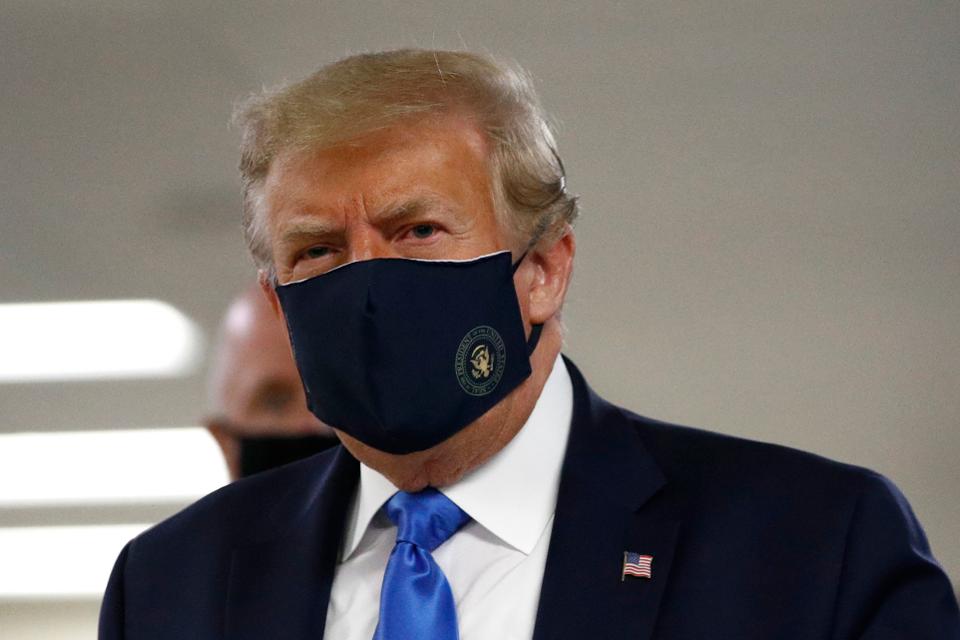Washington: US voters went to the polls starkly divided on how they see President Donald Trump’s response to the coronavirus pandemic, with a surprising twist: In places where the virus is most rampant now, Trump enjoyed enormous support.
An Associated Press analysis reveals that in 376 counties with the highest number of new cases per capita, the overwhelming majority — 93 per cent of those counties — went for Trump, a rate above other less severely hit areas. Most were rural areas in the Dakotas, Montana, Nebraska, Wisconsin and Iowa.
Taking note of the contrast, state health officials are pausing for a moment of introspection. Even as they worry about rising numbers of hospitalisations and deaths, they hope to reframe their messages and aim for a reset on public sentiment now that the election is over.
“Public health officials need to step back, listen to and understand the people who aren’t taking the same stance” on mask-wearing and other control measures, said Dr Marcus Plescia of the Association of State and Territorial Health Officials.
“I think there’s the potential for things to get less charged and divisive,” he said, adding that there’s a chance a retooled public health message might unify Americans around lowering case counts so hospitals won’t get swamped during the winter months.
The AP’s analysis was limited to counties in which at least 95 per cent of precincts had reported results, and grouped counties into six categories based on the rates of COVID-19 cases they’d experienced per 100,000 residents.
Polling, too, shows voters who split on Republican Trump vs Democrat Joe Biden differed on whether the pandemic is under control.
Thirty-six per cent of Trump voters described the pandemic as completely or mostly under control, and another 47 per cent said it was somewhat under control, according to AP VoteCast, a nationwide survey of more than 110,000 voters conducted for the AP by NORC at the University of Chicago. Meanwhile, 82 per cent of Biden voters said the pandemic is not at all under control.
The pandemic was considered at least somewhat under control by slim majorities of voters in many red states, including Alabama (60 per cent), Missouri ( 54 per cent), Mississippi (58 per cent), Kentucky (55 per cent), Texas (55 per cent), Tennessee (56 per cent) and South Carolina (56 per cent).
In Wisconsin, where the virus surged just before the election, 57 per cent said the pandemic was not under control. In Washington state, where the virus is more in control now compared to earlier in the year, 55 per cent said the same.
Voters in New York and New Hampshire, where the virus is more controlled now after early surges, were roughly divided in their assessments, similar to voters nationwide.
Trump voters interviewed by AP reporters said they value individual freedom and believed the president was doing as well as anyone could in response to the coronavirus.
Michaela Lane, a 25-year-old Republican, dropped her ballot off last week at a polling site at an outdoor mall in Phoenix. She cast her vote for Trump.
“I feel like the most important issue facing the country as a whole is liberty at large,” Lane said. “Infringing on people’s freedom, government overrule, government overreach, chaos in a lot of issues currently going on and just giving people back their rights.”
About half of Trump voters called the economy and jobs the top issue facing the nation, roughly twice the percentage who named the pandemic, according to VoteCast. By contrast, a majority of Biden voters — about six in 10 — said the pandemic was the most important issue.
In Madison, Wisconsin, Eric Engstrom, a 31-year-old investment analyst and his wife, Gwen, voted absentee by mail in early October.
Trump’s failure to control the pandemic sealed his vote for Biden, Engstrom said, calling the coronavirus the most immediate threat the nation faces. He and his wife are expecting their first child, a girl, in January and fear “the potential of one of us or both of us being sick when the baby is born,” he said.
Since the start of the pandemic, 74 state and local public health officials in 31 states have resigned, retired or been fired, according to an ongoing analysis by AP and Kaiser Health News.
AP
